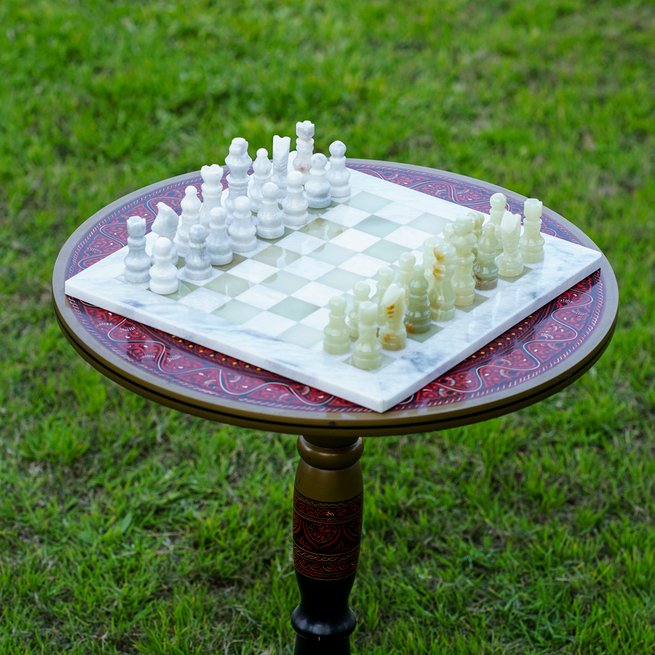Chess has been graced by legendary players who have pushed the boundaries of strategy, mental endurance, and skill. Their unique playing styles, daring moves, and remarkable contributions to the game have left an indelible mark on chess history. Let’s explore some of the most famous chess grandmasters and the signature moves that define their legacy.
1. Garry Kasparov: The Aggressive Tactician
Garry Kasparov, a Russian grandmaster, is often regarded as one of the greatest chess players of all time. Known for his aggressive, dynamic style, Kasparov combined tactical brilliance with deep calculation to dominate his opponents.
- Signature Move: The Najdorf Sicilian
Kasparov was a master of the Najdorf Sicilian, an opening that begins with 1.e4 c5 2.Nf3 d6 3.d4 cxd4 4.Nxd4 Nf6 5.Nc3 a6. This opening leads to complex, sharp positions that Kasparov used to outmaneuver opponents, exerting early pressure and creating rich, tactical opportunities. His mastery of this line allowed him to dictate the pace of the game, putting his opponents on the defensive from the very start.
Kasparov’s tactical prowess and willingness to take risks made him a thrilling player to watch, and his influence on aggressive chess play is still felt in tournaments today.
2. Bobby Fischer: The Precision Strategist
American grandmaster Bobby Fischer was a prodigy known for his unparalleled focus and relentless drive for perfection. Fischer’s approach to chess was methodical, often involving deep positional understanding and precise calculations that would wear down his opponents over time.
- Signature Move: The Fischer-Sozin Attack
In response to the Sicilian Defense, Fischer often employed the Sozin Attack, a variation that allowed him to launch a quick offensive. The sequence begins with 1.e4 c5 2.Nf3 Nc6 3.d4 cxd4 4.Nxd4 g6 5.Bc4. This opening aims to control the center while keeping options open for a kingside attack.
Fischer’s ability to maintain consistent pressure and capitalize on even the smallest mistakes left his opponents with few options. His influence endures, inspiring players to prioritize accuracy and depth in their calculations.
3. Magnus Carlsen: The Endgame Magician
Norwegian grandmaster Magnus Carlsen, the reigning world champion, is renowned for his exceptional endgame skill and adaptive play style. Carlsen can switch between tactical and positional play as the game demands, making him one of the most unpredictable players in chess history.
- Signature Move: The Carlsen Variation
While Carlsen doesn’t adhere strictly to specific openings, he is famous for adopting lesser-known lines, often surprising his opponents and steering the game into unfamiliar territory. One such example is his unique twist on the Queen’s Gambit Declined. This flexible opening allows Carlsen to transition seamlessly into favorable endgames, where his skill truly shines.
Carlsen’s seemingly effortless ability to turn the smallest positional advantages into winning endgames has earned him the nickname “The Endgame Magician.” His adaptability and resilience make him a model of modern chess excellence.
4. Mikhail Tal: The Magician of Riga
Mikhail Tal, a Latvian grandmaster and former world champion, was known for his incredible creativity and willingness to make sacrifices. Tal’s games are a masterclass in unorthodox tactics, often leaving his opponents bewildered.
- Signature Move: The King’s Indian Attack
One of Tal’s favorite setups was the King’s Indian Attack, often arising from 1.Nf3 followed by 2.g3 and 3.Bg2. This flexible opening allows for attacking opportunities on both sides of the board, and Tal used it to create chaos and unbalance his opponents.
Tal’s style wasn’t about playing by the book but rather about making the board a canvas for his unique, daring tactics. He demonstrated that chess could be both beautiful and unpredictable, inspiring countless players to embrace creativity.
5. Anatoly Karpov: The Positional Master
Anatoly Karpov, a Russian grandmaster and former world champion, is celebrated for his solid, positional style. Known as the “Boa Constrictor,” Karpov would slowly suffocate his opponents by carefully maneuvering his pieces and avoiding unnecessary risks.
- Signature Move: The Caro-Kann Defense
Karpov was a master of the Caro-Kann Defense (1.e4 c6), an opening that emphasizes solid, defensive play while waiting for counterattacking chances. The Caro-Kann helped Karpov establish a strong center and maintain a resilient structure, giving him the stability he needed to slowly outmaneuver his opponents.
Karpov’s games demonstrate the power of patience, showing that a solid foundation and careful planning can be just as effective as bold tactics. His style is a reminder that chess is often a game of incremental advantages.
6. Judit Polgár: The Queen of Attacking Chess
Hungarian grandmaster Judit Polgár, widely considered the strongest female player in history, broke barriers with her fearless, attacking style. Polgár was known for taking on and defeating the world’s top players with her aggressive play.
- Signature Move: The King’s Gambit
Polgár often employed the King’s Gambit (1.e4 e5 2.f4), a bold opening that sacrifices a pawn to gain rapid development and create attacking chances. Polgár’s use of this aggressive opening showcased her fearless approach and put her opponents under immediate pressure.
Her trailblazing style and achievements continue to inspire a new generation of players, showing that courage and tenacity can break any barrier.
Conclusion
The legacies of these grandmasters live on through their signature moves and unique styles. Each player brought something different to the board, demonstrating that there’s no single “right” way to play chess. Whether you’re inspired by Kasparov’s daring tactics, Fischer’s precision, or Carlsen’s adaptability, studying these grandmasters offers invaluable lessons for improving your own game.
Incorporate a bit of each style into your play, and you’ll soon find yourself not only becoming a stronger player but also appreciating the depth and beauty that chess has to offer.


